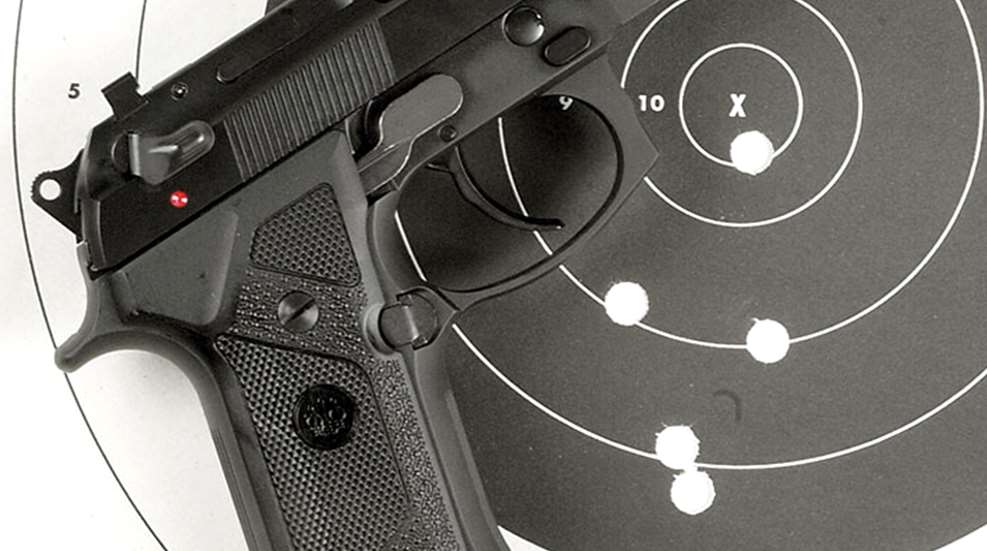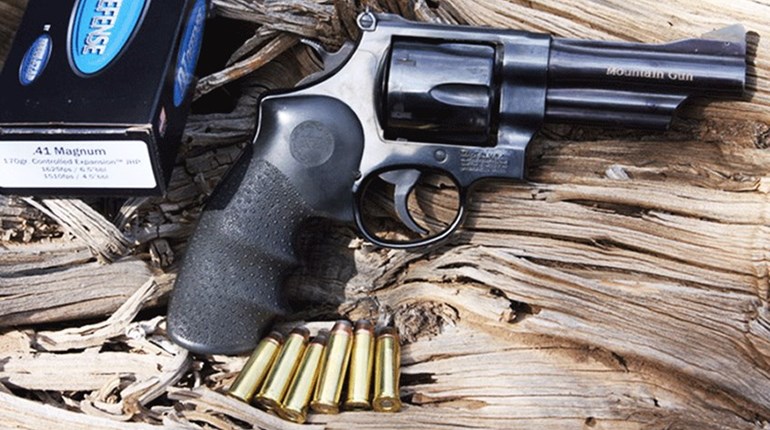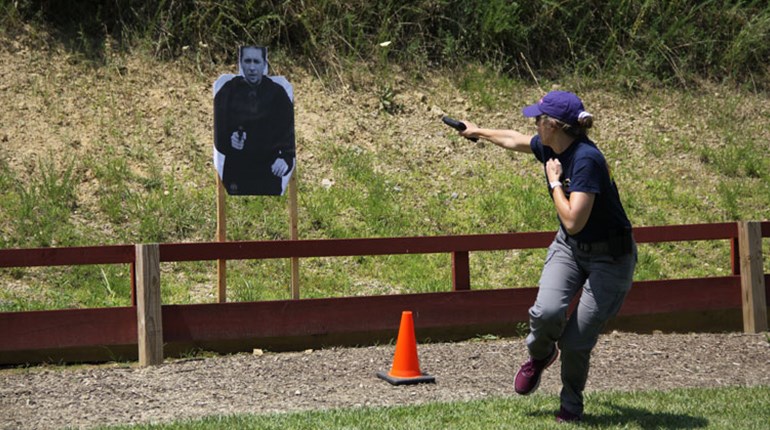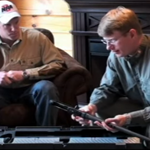
Handgun targets can tell you a lot more about how you shoot than just whether you missed or not. They can also tell you how you hold the gun, how you pull the trigger, if you flinch ... All you have to do is know how to listen to your targets "talk."
Provided your gun is properly sighted, and there are no environmental considerations such as wind to affect the shot, there are eight common shooting errors that can be detected easily from your target: dipping, heeling, thumbing, riding the recoil, too much trigger finger, lobstering, trigger jerking and the basic inability to shoot well. The following interpretations of "target talk" are specific to right-handed shooters. Lefties simply reverse the areas of the target to hear their targets talk.
The most common is "dipping," which is breaking the wrist at the instant the trigger is pulled in anticipation of the recoil. The downward movement of the gun is an unconscious effort to counteract and control the kick. It can be instilled by pretending to shoot an imaginary handgun, and jabbing your finger forward and down much like Bill Clinton used to do when trying to emphasize a point. Bullet holes tend to string vertically below the bullseye.
"Heeling," as the name suggests, is pushing on the butt of the gun with the heel of the shooting hand. With that motion, the tendency is to direct shots high and to the right of the bullseye.
"Thumbing" is also fairly intuitive sounding, and is when the shooter presses against the side of the gun with the thumb of his or her shooting hand. The pushing causes the muzzle to move off in the same direction along with the shots so that bullet holes string horizontally out to the right of the bullseye.
"Riding the recoil" is the opposite of dipping, in that the shooter is actually flipping the muzzle up before the recoil starts. It's a recoil-anticipating action and is also instilled by pretending there is recoil when shooting a "finger pistol." Bullet holes tend to string high and to the left when riding recoil.
Bullet holes that tend to string out directly to the left of the bullseye typically indicate that the shooter has too much of his or her finger across the trigger. He or she is thus squeezing at an angle that pushes the gun off in that direction during the final rearward movement of the trigger.
"Lobstering" is another way of saying that the shooter is gripping the gun continuously tighter as the trigger is pulled. This squeezing has the opposite effect of heeling, as when the trigger breaks, the tendency is to snatch the gun low and to the right so that bullet holes string out from the bullseye between 3 and 5 o'clock.
"Jerking" the trigger usually combines the worst of dipping with the leftward movement of pulling the trigger at an angle. If you're jerking the trigger, your shots will usually string out low and left.
Finally, right- or left-handed, if your shots are simply all over the place with no distinct pattern to where they're hitting, it's time to get a knowledgeable coach and work on the fundamentals.
I hope I've helped you "hear" your target. With few exceptions, most of the shooting errors noted above are induced by anticipation of recoil. If your target is telling you that recoil is ruining your shooting, reduce your loads, and change any bad habits accordingly.






































